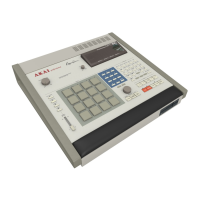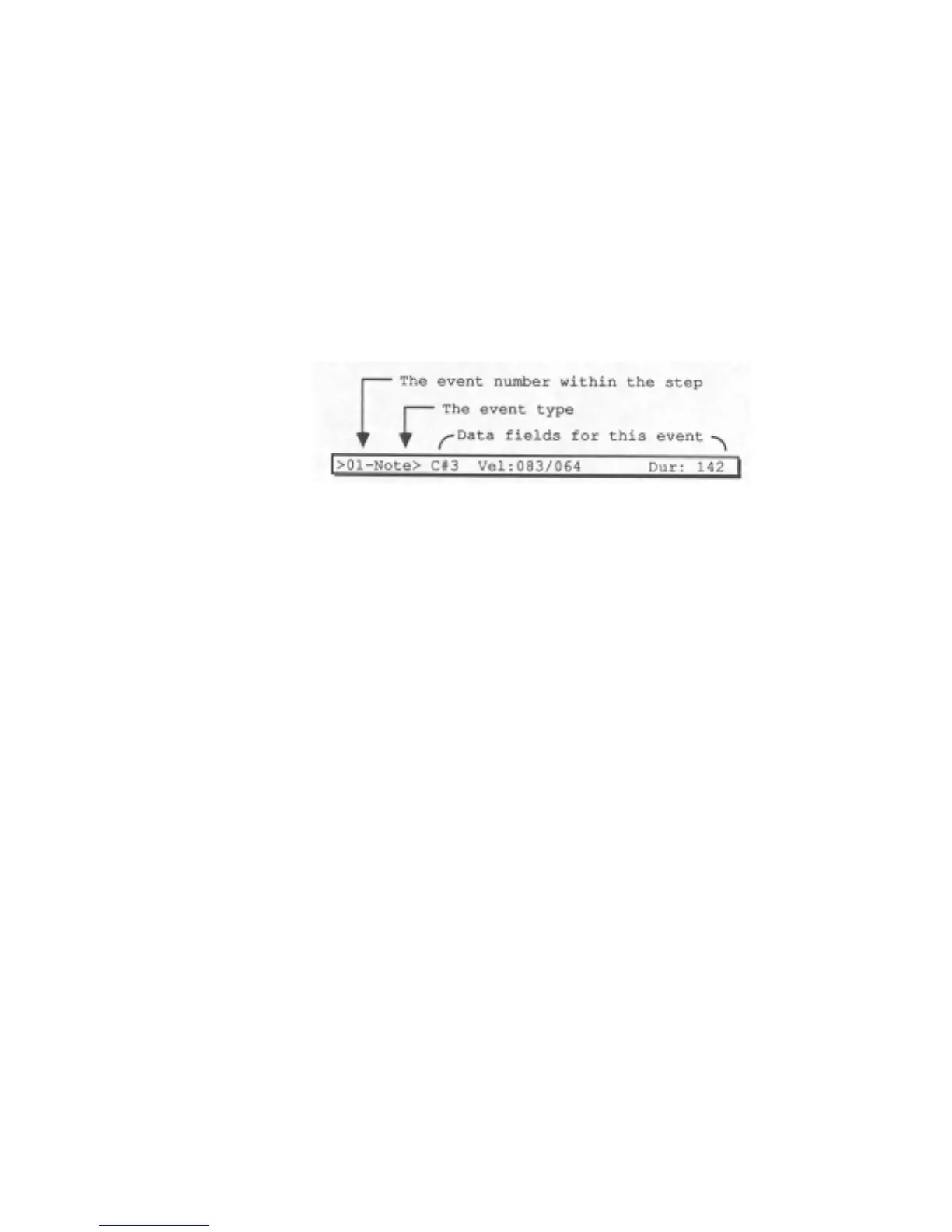Section 4:Editing sequences
105
locations, and you are currently viewing notes falling on nonshifted
locations.
Here's more details about STEP EDIT:
The step edit screen may display up to five events, one on each line, which
exist at the current sequence position, or "step". The format of the event
line is different for each type of event, but the first two fields of each event
type are the same:
At the left edge of the screen is the event number within the current step.
There can be many events at this step, and this field indicates the number of
the event within the step. For example, if a three note chord existed at this
step, this field would show the number of each note within the chord. To
the right of the event number is an untitled choice field, containing the type
of event displayed. Examples of midi events are: notes, pitch bend, program
change, etc. The other fields to the right are unique for each type of event.
The available types of events and their associated data fields are:
>O1-NOte> C#3 Ve1:083/064 Dur:0142
This is a NOTE event. The fields are:
1. PITCH (untitled): This choice field has no title, but
contains the pitch of the note, showing the note name
(C through B; sharps are indicated by a "#"), followed
by the octave (-2 through 8). The range is from C-2 to
G8.
2. VEL (velocity): This is actually two fields: the initial
velocity and the release velocity. The range for
both is from 0 to 127.
3. DUR (duration): This field shows the duration from
the "note on" to the "note off", measured in clocks
(1/384 notes). The range is 1 - 9999.
>O1-Note> TOMl Ve1:064 Tun: 0 Dur: 93
This is a DRUM NOTE event. The fields are:
1. DRUM NAME (untitled): This choice field indicates
which of the 32 internal drum names this event
applies to.
2. VEL (velocity): This is the velocity of the drum
note.
3. TUN (tuning): This field sets the tuning for the
displayed note only, and is added to the tuning

